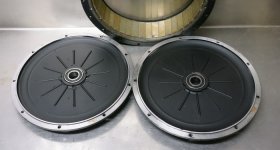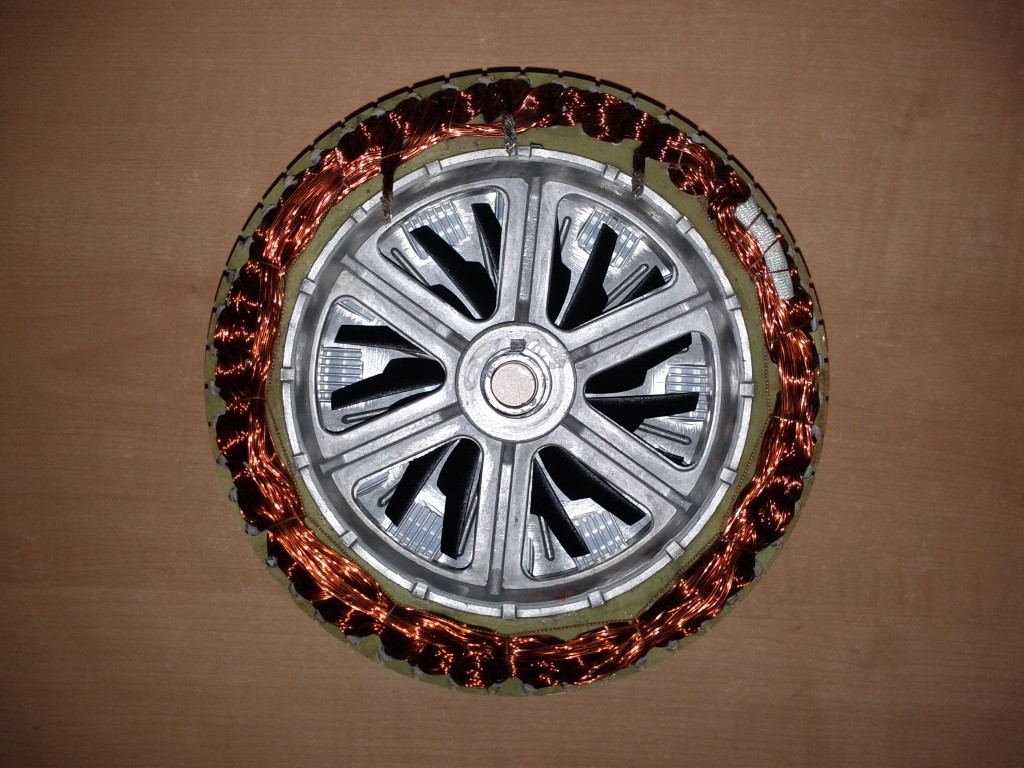ebikedelight said:
there are countless opinions on this subject though...
Perhaps, but there is a reason why I titled this particular thread "
Definitive Tests on the Heating and Cooling...", because a whole bunch of opinion and subjective "my motor felt cooler doing X" reports don't really help set any records straight.
it just doesnt make sense to me....we are talking about the inside of the hub motor, where its dark anyways...so wy would a certain color of spray paint, result in pulling substantial heat in those conditions ? We arent talking about radiation heat dissipation ....like having the sun beat down on a white surface or black surface
Look at any container designed for the opposite purpose, minimizing heat transfer from the inside to the outside, like a thermos or other vacuum flask. The inside surfaces of those are almost always silvered with a mirror finish so that there is a minimal possible radiative heat transfer between the layers. We want to maximize the heat transfer, so it would make sense to do the opposite. Paint the stator black so that it emits infrared heat energy as much as possible, and paint the side covers black so that they can absorb this IR heat as easily as possible to conduct it over to the air outside.
In a still environment, the heat dissipation by radiation like this can easily exceed the amount of heat moved by conduction through air, but if there is a reasonable amount of airflow then usually convective heat loss is quite a bit more significant. That's why I don't think the painted side covers will have that much of an effect since the air inside is already pretty turbulent, but rather than just speculating, here is this:
A pair of MXUS side plates with a flat black paint job ready for reassembly and a repeat of the last experiments. If all goes well we should have the set of 100, 200, 300, 400, and 500 rpm conductivity tests for this finished by end of Friday, and then we'll see if the difference is that material.
In fact, I think painting the inside of the hub motor, would not help at all, since its putting a thicker layer of substrate, that the inside heat now has to try and penetrate thru, to get to the outside of the hub side covers, via thermal conduction.
It's true for sure that a layer of paint will have some insulating effect, but it is also very easy to estimate the magnitude of this. Typical hub motor has a surface area of ~1000 cm^2 (0.1m^2), a decently thick layer of paint would be about 0.1mm, and the thermal conductivity of plastics is on the order of 0.1 w/mK, and I'd expect paint to be similar:
Conductivity = Area / Length * coefficient = 0.1 m^2 / 0.0001 m * 0.1 W/mK = 100 Watts / degree
So even if the motor is shedding 200 watts, the presence of the paint over the casing would increase the temperature by just 2 degrees. Presumably the benefits of added radiation transfer will outweigh this small insulating effect, but you are correct that it does add some small impediment to the heat flow.
Maybe im wrong, but I dont think its a big help...I think its a waste of time, that acutally has more negatives then positives.
If you havent checked out my thread , under general disccusion, on heat sink mods, take a few moments and read thru it.
Yes, I saw that earlier. I suspect you could achieve almost exactly the same effect by using a proper thermally conductive adhesive to bond the finned heat sink to the side plate and avoid drilling the hole in the first place. Same analysis, if you have say a 1" diameter (.0005m^2) of side plate (assume 3mm thick aluminum), then the thermal conductivity of that chunk of metal you are drilling out is:
Conductivity = 0.0005m^2 / 0.003m * 210 W/mK = 35 watts / degree. Now multiply this by the number of "holes/heatsinks" that you have and you can see that the metal side plate pieces you were removing under the heatsinks were barely any impediment at all to the flow of heat from the inside to the outside of the shell. The joint between the heat sink and the side plate may have been, but not the side plate metal itself.
pendragon8000 said:
I'm sorry if I'm off topic with any of my posts here. I dont want to spam.
No it's great so long as you are collecting and posting actual measured data as you've been doing, then this can help to either corroborate or challenge some of the numeric results that we've been seeing in our tests here.







